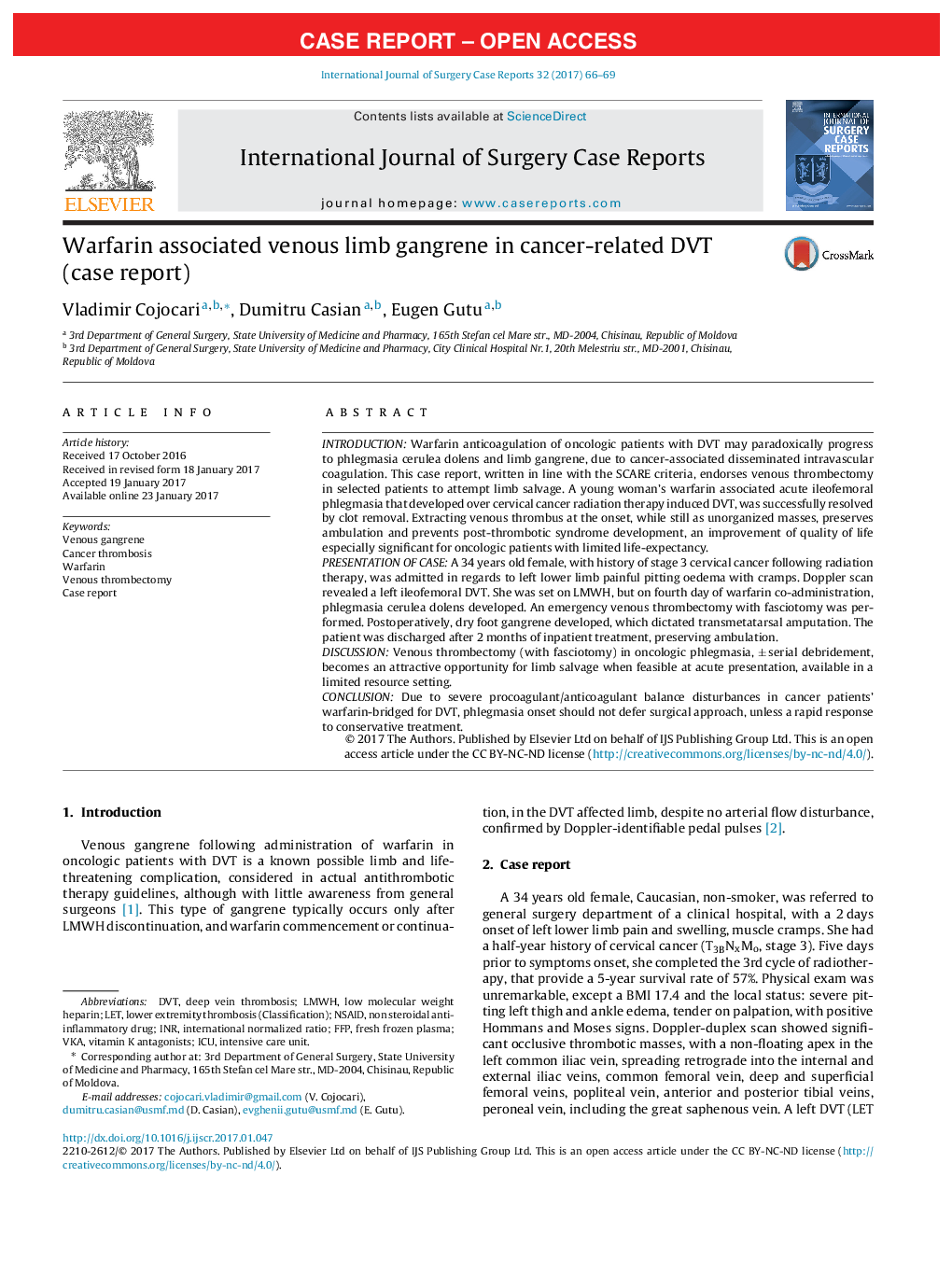| کد مقاله | کد نشریه | سال انتشار | مقاله انگلیسی | نسخه تمام متن |
|---|---|---|---|---|
| 5732985 | 1612082 | 2017 | 4 صفحه PDF | دانلود رایگان |

- Extensive thrombosis, absent/contraindicated thrombolysis, inefficient conservative treatment - encourage venous clot removal.
- Venous thrombectomy, with fasciotomy and delayed necrectomy, may be considered for limb salvage in selected acute cases.
- Due to high chances of severe post-thrombotic morbidity, ileofemoral phlegmasia patients may benefit the most from timely venous thrombectomy.
IntroductionWarfarin anticoagulation of oncologic patients with DVT may paradoxically progress to phlegmasia cerulea dolens and limb gangrene, due to cancer-associated disseminated intravascular coagulation. This case report, written in line with the SCARE criteria, endorses venous thrombectomy in selected patients to attempt limb salvage. A young woman's warfarin associated acute ileofemoral phlegmasia that developed over cervical cancer radiation therapy induced DVT, was successfully resolved by clot removal. Extracting venous thrombus at the onset, while still as unorganized masses, preserves ambulation and prevents post-thrombotic syndrome development, an improvement of quality of life especially significant for oncologic patients with limited life-expectancy.Presentation of caseA 34 years old female, with history of stage 3 cervical cancer following radiation therapy, was admitted in regards to left lower limb painful pitting oedema with cramps. Doppler scan revealed a left ileofemoral DVT. She was set on LMWH, but on fourth day of warfarin co-administration, phlegmasia cerulea dolens developed. An emergency venous thrombectomy with fasciotomy was performed. Postoperatively, dry foot gangrene developed, which dictated transmetatarsal amputation. The patient was discharged after 2 months of inpatient treatment, preserving ambulation.DiscussionVenous thrombectomy (with fasciotomy) in oncologic phlegmasia, ± serial debridement, becomes an attractive opportunity for limb salvage when feasible at acute presentation, available in a limited resource setting.ConclusionDue to severe procoagulant/anticoagulant balance disturbances in cancer patients' warfarin-bridged for DVT, phlegmasia onset should not defer surgical approach, unless a rapid response to conservative treatment.
Journal: International Journal of Surgery Case Reports - Volume 32, 2017, Pages 66-69